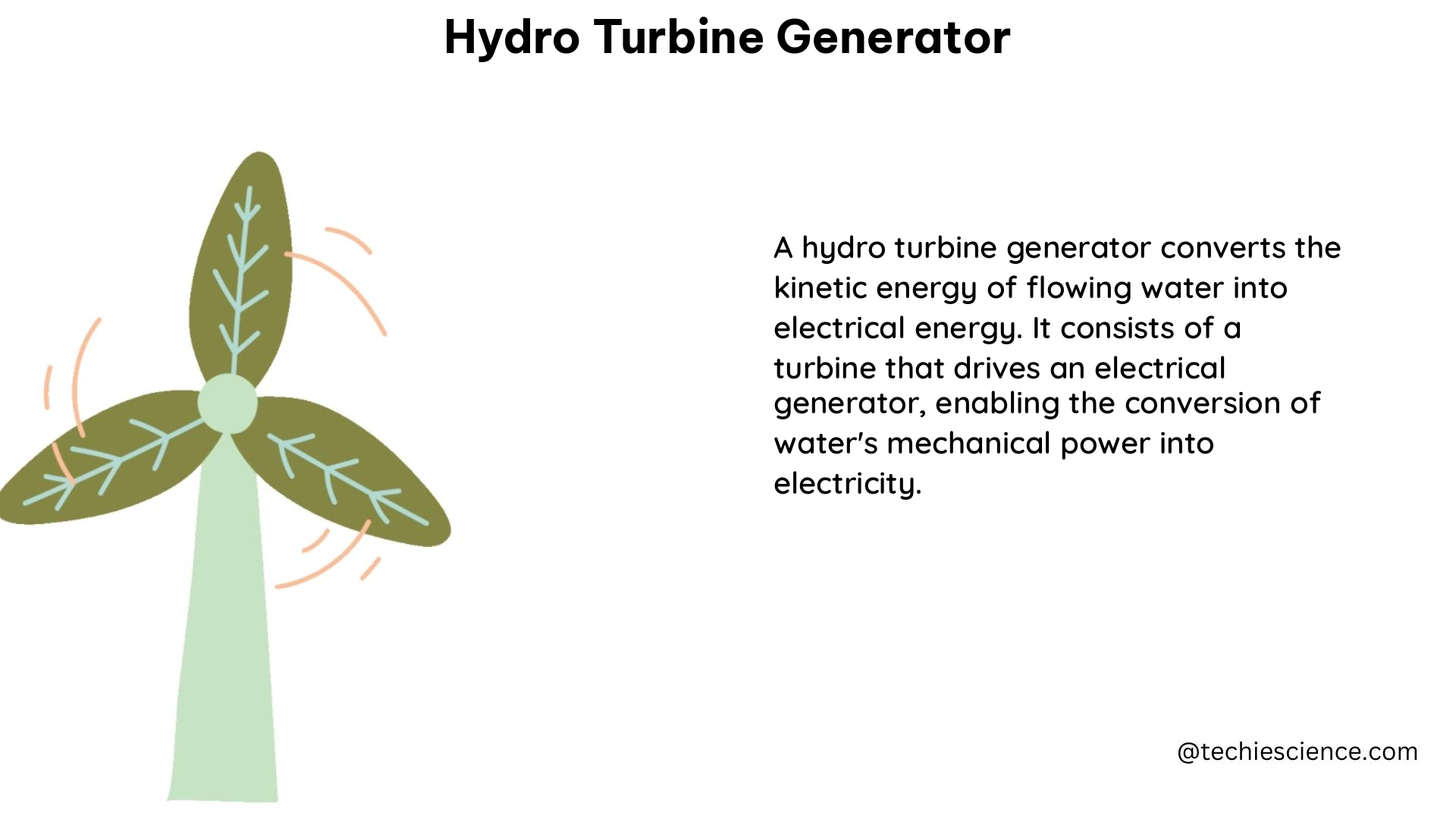Hydro turbine generators are remarkable devices that harness the power of flowing or falling water to generate clean, renewable electricity. These systems convert the kinetic energy of water into mechanical energy, which is then transformed into electrical energy by a generator. The efficiency of a hydro turbine generator depends on various factors, including the flow rate, water and jet velocity, net and jet head, and the power output of the prime mover or turbine-governor models.
Understanding Hydro Turbine Efficiency
In a study on a Pico hydro system with an impulse turbine and a 3-phase AC permanent magnet alternator (PMA), the maximum PMA efficiency was found to be 71.32% at a flow rate of 19.1 gallons per minute (gpm) or 0.0343 cubic feet per second (ft³/s). The turbine efficiency was directly related to the net and jet head, as well as the water and jet velocity, and was maximized at a flow rate of 19.7 gpm. The jet power ranged from 30.25 (41) to 390.14 (528.9) pound-force feet per second (lbf·ft/s) or watts (W), as determined by using equation (7) at different flow rates.
Hydropower Project Costs and LCOE

In another study, the cost breakdown of a 500 MW greenfield hydropower project in the United States was analyzed. It was found that the electro-mechanical equipment for hydro as a function of capacity varies significantly by country. For instance, the cost of electro-mechanical equipment for a 10 MW hydropower project in China is around $1.5 million, while in the United States, it is around $3.5 million.
Furthermore, the levelized cost of electricity (LCOE) for hydropower plants also varies significantly by country and region. For instance, the LCOE of hydropower in the United States is around $0.04-$0.06 per kilowatt-hour (kWh), while in developing countries, it is around $0.06-$0.12 per kWh.
Technical Specifications of Hydro Turbine Generators
A typical hydro turbine generator consists of a turbine runner, a generator, and a control system. The turbine runner converts the kinetic energy of water into mechanical energy, which is then converted into electrical energy by the generator. The control system regulates the flow of water to the turbine and the electrical output of the generator.
For instance, a typical Pelton turbine has a specific speed range of 5-30 revolutions per minute (rpm), a flow rate range of 0.1-10 cubic meters per second (m³/s), and a head range of 50-1500 meters (m). The generator connected to the Pelton turbine typically has a power rating of 5-1000 kilowatts (kW) and a voltage rating of 230-690 volts (V).
DIY Hydro Turbine Generator
There are various resources available online that provide detailed instructions on building a small-scale hydro turbine generator. The National Renewable Energy Laboratory (NREL) offers a comprehensive guide on building a micro-hydro power system, which includes instructions on constructing a turbine generator.
Key Components of a DIY Hydro Turbine Generator
-
Turbine Runner: The turbine runner is the heart of the hydro turbine generator, responsible for converting the kinetic energy of water into mechanical energy. The design and efficiency of the turbine runner are crucial for the overall performance of the system.
-
Generator: The generator is the component that converts the mechanical energy from the turbine runner into electrical energy. The type of generator (e.g., synchronous, induction, or permanent magnet) and its power rating will depend on the specific requirements of the project.
-
Control System: The control system regulates the flow of water to the turbine and the electrical output of the generator. This includes components such as valves, governors, and electronic control units.
-
Penstock and Intake: The penstock is the pipe that carries the water from the intake to the turbine, while the intake is the structure that diverts the water from the source (e.g., a stream or river) into the penstock.
-
Electrical Connections: The electrical connections include the wiring, transformers, and other components necessary to integrate the hydro turbine generator into the electrical grid or a standalone power system.
By understanding the technical details and design considerations of hydro turbine generators, DIY enthusiasts can build their own small-scale systems and contribute to the growing renewable energy landscape.
References
- Determining turbine and generator efficiency of a Pico hydro system, https://pdf.usaid.gov/pdf_docs/PA00VPJ2.pdf
- Hydropower Modeling Gaps in Planning and Operational Studies, https://www.pnnl.gov/main/publications/external/technical_reports/PNNL-33836.pdf
- Renewable Energy Cost Analysis: Hydropower – IRENA, https://www.irena.org/-/media/Files/IRENA/Agency/Publication/2012/RE_Technologies_Cost_Analysis-HYDROPOWER.pdf
- Developing a Quantitative Method for Assessing Plant Conditions, https://www.hydroreview.com/world-regions/north-america/developing-a-quantitative-method-for-assessing-plant-conditions/
- Water Turbine – an overview, https://www.sciencedirect.com/topics/engineering/water-turbine
- Micro-Hydro Power System, https://www.nrel.gov/docs/fy06osti/38880.pdf

The lambdageeks.com Core SME Team is a group of experienced subject matter experts from diverse scientific and technical fields including Physics, Chemistry, Technology,Electronics & Electrical Engineering, Automotive, Mechanical Engineering. Our team collaborates to create high-quality, well-researched articles on a wide range of science and technology topics for the lambdageeks.com website.
All Our Senior SME are having more than 7 Years of experience in the respective fields . They are either Working Industry Professionals or assocaited With different Universities. Refer Our Authors Page to get to know About our Core SMEs.